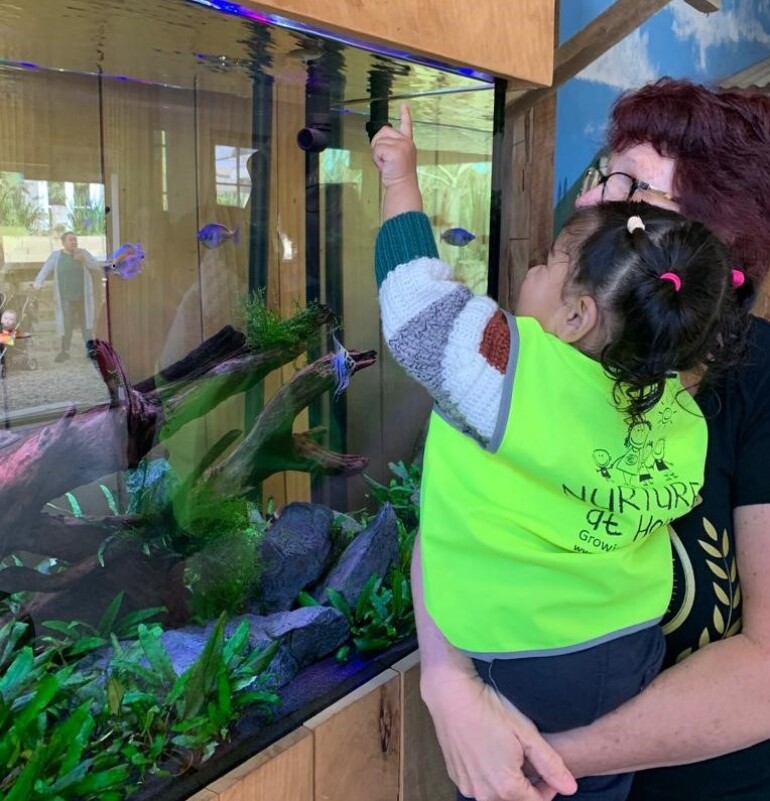News And Events

Encouraging Conversations
5 March 2023Encouraging conversations Te akiaki i te kōrerorero
While children are born with an innate ability to communicate, the art of conversation requires a lot of learning and practice.
Serve and return - Serve and return is what tennis players do to keep a game going. It is also the term used to describe the back and forth interactions that take place between adults and children in conversations. Knowing how and when to take turns is the first step in learning to converse with others.
Taking turns in conversation is vital when so many new brain connections are forming. Turn-taking is more important than the total number of words adults use with children. This is because talking with children rather than talking at children gives them a chance to use their new sounds, words and sentences. With infants and toddlers, sometimes their serve will be a gesture, glance or kick of their legs. Kaiako can build their response on the ways infants communicate, especially through tone of voice and facial expressions.
When kaiako name and talk about what children are already looking at or playing with, children learn new words and concepts much faster than if kaiako redirect their attention to a new object. Allow wait time. Like adults, children often need time to process their response. If they feel under pressure, they are less likely to continue the turn-taking talk. To help children learn the back and forth pattern of a conversation, include games that involve turn-taking, such as Mili mili pati ā (Samoan chant), Peek-a-boo or I Spy. Kaiako will be the ones to put the work in to extend the conversation. Children will let you know when they’re finished.
Here's a lovely story of practice in a homebased setting:
Katakata/laughter in serve and return
Kaiako in a home-based service were introduced to the idea of serve and return, the importance of noticing and acknowledging these conversations and the multiple ways of initiating and sustaining the serve and return.
A home-based coordinator recorded a kaiako engaged in non-verbal interactions with a three-monthold infant, using gestures and facial expressions as well as te reo Māori.
The kaiako exaggerated his response to an infant’s smile with a gentle, “Ahh pēpi.” He grinned, raised his eyebrows and waited. Initially puzzled, the infant then replied with delight. Her whole body wriggled as she understood that her utterances were acknowledged. In response to the wriggling the kaiako said, “Katakata. Āe, katakata.” The infant put her head back and laughed, returning the kōrero. She waited, expectantly, for the kaiako to return the conversation. The conversation went back and forth for nearly a minute, strengthening the relationship between kaiako and infant and establishing a means of communication – laughter.
Here's another example of serve and return:
Infant SERVE: (Points to a ball.)
Kaiako RETURN: That’s a ball!
Infant RETURN: Baah
Kaiako RETURN: A big ball!
Infant RETURN: Baah
Kaiako RETURN: Let’s roll the ball. (Kaiako rolls ball to toddler.)
Text from Ministry of Education December 2020 publication, Talking Together


